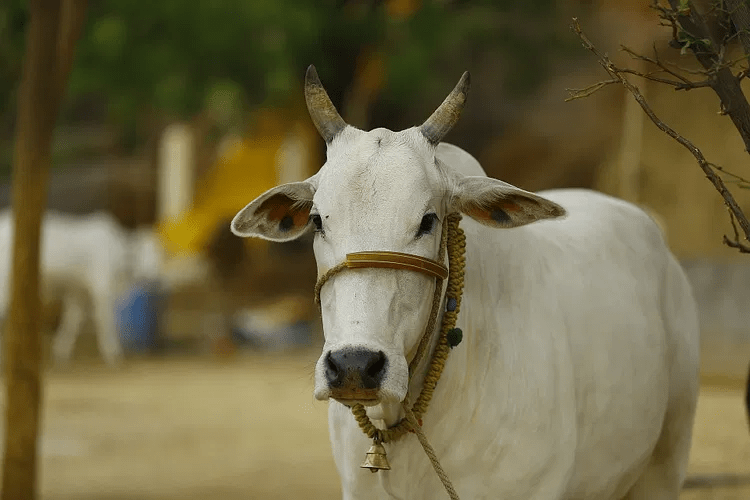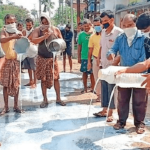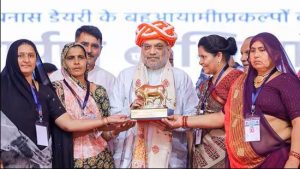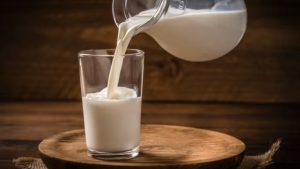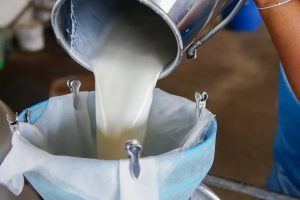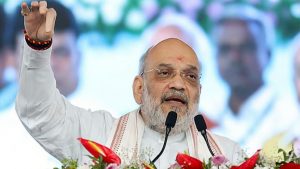
A journey which was strategised by the milkman of India, Verghese Kurien. To understand the structure of cooperatives and the new opportunities in the dairy sector, SIES and FPJ organised a webinar ‘Milk is the real backbone of India’s rural wealth?’ recently. The panellists for the session were Arun Raste, Executive Director, NDDB and Madan Sabnavis, Chief Economist, CARE Ratings. While this session was moderated by R N Bhaskar, consulting editor, FPJ; Vaneeta Rane, head, BMM, SIES College welcomed the panellists and delivered a vote of thanks.
Given below are edited excerpts compiled by Jescilia K
https://www.youtube.com/watch?v=VijIQo0XcaE&feature=emb_logo
Contribution of the cooperative movement in the dairy industry
Arun Raste, Executive director, NDDB: In India, milk production is by mass and not mass production. In India, it is a business of masses.
In the United States, 2-3 per cent of the population is dependent on agriculture and allied businesses whereas over 50 per cent of India’s population is depended on agriculture.
Around 199 million tonnes of milk are produced in India. Of that only 20 per cent comes from the organised sector — private and (largely) cooperative sector. India was able to become the number one milk producer in the world due to Dr Varghese Kurien.
Amul, Mahananda, Nandini, Vijaya, Verka, Milkfed, Aavin, Medha, Sudha among others are all cooperative brands. These cooperative brands have a different structure compared to private dairy players. In this, every state has a federation, under that district union and under that is the dairy cooperative societies.
About 37 million litres per day of liquid milk are sold and this milk is provided by the cooperatives. Organised cooperatives cover almost 15,000 villages and have almost 6 lakh members. These cooperatives cover almost about 15 states through new Farmer Producer Companies (FPC).
Amul is one of the most popular food brands in the country. While brands like Nandini and Vijaya is popular in Karnataka and Andhra Pradesh respectively, Mother Dairy is popular in New Delhi and Mumbai. The cooperative is one big strength of the dairy industry.
Dr Kurien ensured that the cooperatives operated in a democratic manner. Thus, you will hardly see any politics in a dairy cooperative compared to other cooperatives like sugarcane, textile and others. Dr Kurien made certain that farmers owned it. The systems are very transparent — right from a dairy producer to dairy consumer. Thus, it is very difficult for anyone to influence the dairy cooperatives.
Madan Sabnavis, Chief Economist, CARE Ratings: Dairy farming is considered as a supplementary activity. However, it is quite clear it is not.
By evaluating the numbers like volume, the value of production, and also the employment generation by the dairy sector, the government should put it on the priority list.
In India, around 80 per cent of the dairy sector is still unorganised, and 20 per cent is organised. This means there is a huge potential to convert unorganised to organised— which is an opportunity. The question is how to use this opportunity to leverage the greater value of the industry.
Social and economic value of dairy
Arun Raste: The two sectors in the country — microfinance and dairy — have harnessed the potential of women. NDDB ran a dairy programme which concluded last year. After this, NDDB conducted a study. It was found that 85 per cent of the work in the dairy sector is done by women. Microfinance and dairy have helped in easing the gender inequality in the country. Both have become economic multipliers as far as rural economics is concerned. As far as microfinance is concerned, it is also linked to dairy. This is because 40 per cent of the dairy farmers become microfinance customers when they wish to purchase a milch animal. These two sectors have become the largest employers of women in the country.
Due to the democratic nature of the dairy cooperatives, the inequality — related to economic, social and gender — in villages have decreased over time.
Dairy sector addresses the hunger and nutrition issue in the country which is also a UN Sustainable Development Goal (SDG) objective. The sector was responsible for alleviating poverty in rural India by providing regular income to dairy farmers. As India is largely a vegetarian country, this country is dependent on milk for its protein requirement (one of the sources of protein).
Meanwhile, dairy and poultry are two sectors that give insurance against any vagaries of agriculture. These sectors give farmers cash in hand daily or regularly, while in the case of farming the revenue is irregular. If a crop fails, the dairy sector supports the farmer and the rural economy. Also, this failed crop is used to support the dairy sector as it becomes a fodder. Thus, the wastage in this sector is very less.
The value chain and the supply chain of milk are the most transparent. In the case of cooperatives, only 15-20 per cent goes in the supply chain and rest goes back to the primary producer. That means 80 per cent goes back to the rural economy. If there is some prosperity in rural India, it is due to dairy.
Value-added products
Arun Raste: India is the largest converter of milk to value-added products — which adds to its shelf life. The shelf life of milk is a maximum of 36 hours. But if you turn it into a value-added product, the shelf life of the milk goes up by 12-18 months.
There are two periods in the dairy industry — lean and flush. In winter, there is more milk and in the summer, there is less milk. During winter, we convert excess milk into value-added products which can be used in summer. This stabilises the market automatically. This way the producer and the consumer do not suffer.
The value of milk and milk products put together exceed the total economic value of paddy and wheat in the country.
In terms of consumption, India’s average as per the availability of milk is 415 grams per day. But it is skewed in different parts of India. In the case of Punjab and Haryana, it is much higher compared to the national average. In other areas in the country, it is much lower especially in the states like Bengal and Odisha. If you increase consumption in the backward state then obviously there will be more demand for milk. In addition, there will be more economic activity that milk will generate in the region. These figures are more likely to go up once the backward states in terms of consumption of dairy products and production catch up with the national average.
Madan Sabnavis: To market milk, it has to be value-added milk products. The array of value-added products in India is very large. This is where the organised sector can play a bigger role.
The farmers are protesting that they are not getting the right price for the milk, but every year there is a hike in milk prices. The prices of milk and its value-added products have always increased in moderation.
While the milk prices have gone up gradually, there was never a time when milk prices dropped (at the end of retail consumers). This is the case for value-added products as well. Milk is a non-controversial product — just in case of plain milk (unlike other agricultural products). But in the case of value-added products, it is an imperfect market.
New opportunities in the dairy sector
Madan Sabnavis: For anyone who wants to enter the dairy industry, there is a lot of scope in unorganised. This is where private entrepreneurs can join in to support the cold storage infrastructure. The cold storage facilities in India are still under development at an unorganised level. This could be a business that could develop as production rises. This process may help smoothen the transition from unorganised to the organised dairy sector.
Arun Raste: There are a lot of new employment opportunities that have come up. In Marathwada and Vidarbha regions, we have trained a group of women to understand the feed requirement of the milch animals (with the help of software) in the region. These women share a list of suggestions to the farmers about the local feed or other feed that needs to be provided to the animal. This has either helped in enhancing the milk quality or reducing the expenditure on feed. So, the dairy farmers either earn an additional income of Rs 25; or save Rs 25 from their expenses.
A few years back, artificial insemination was not a trade, but today it is. There is a new kind of service industry that is coming up. For instance, if a person has few milch animals and it wants help to milk animals, there is a milker who does it. Then, he takes the milk for you and deposits it with the cooperatives.
Circular economy
Madan Sabnavis: India has more cows and buffaloes, but the question is what do we do when the animals stop giving milk and how we address this issue. There should be a way to dispose of the animal as and when required. Earlier, the law allowed export of the bovines but now the scenario is different.
Arun Raste: About 368 families in a village near Anand in Gujarat own biogas plant in their backyard. This takes care of their fuel needs and the slurry from the plant is used in the farm. The excess slurry produced in the plant is packaged and sold as organic manure. This operation is run by women cooperatives. This business model is based on the dung of the animal.
Even after the animal stops giving milk, it can be used to produce dung which will still be viable and economical. It is at the pilot stage but will be replicated across the country (if successful). It is premature to talk about it. In six months, you will hear more about it.
Veganism: Will India catch up?
Madan Sabnavis: Veganism bans use of dairy products. While this concept is catching up globally, it has to be seen how it pans out in India. However, in India, the elite section of the society is avoiding dairy products citing health issues related to the consumption of milk and milk products. But this section is small. However, the question is will it grow and limit the dairy industry.
Arun Raste: Even if veganism gained momentum in India, that will not hurt the dairy industry in India. The reason being there will be a large portion of backward regions in India that would continue to consume dairy to meet their nutritional needs.
